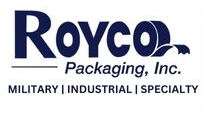We all unwrap some sort of heat sealer bags in our daily lives! Every product, from household goods to industrial spare parts, requires sealing from production to shipping. But how packages are sealed and what goes into ensuring truly impermeable packaging are two factors that are frequently neglected in the equation. This is made possible by the strength of a heat sealer, a flexible tool that enables the formation of quick, precise, and efficient seals for a variety of uses.

Let's examine what a heat sealer does in the context of packing technologies to see how it compares to other approaches in terms of ease of use, efficiency, and end results.
What Is a Heat Sealer?
Heat sealers appear in a variety of shapes and are made for specific applications, but they all serve the same general purpose.
These electronic devices use high heat to bind two different components together by contacting thermoplastics (and other materials) with forks, prongs, bars, or surfaces.
Heat sealers come in many different shapes and sizes. They can be highly customized and coordinated in different types and sizes of industrial setups, depending on the type of plastic and how the product is meant to look and work.
Function
Heat sealers work by reaching the necessary heat and exerting sufficient force to form reliable seals because thermoplastics are made to morph and change shape when exposed to specific high temperatures.
There are many industrial uses for these machines, such as making consumer electronics, high-end medical equipment, furniture, storage systems, and packaging solutions.
You may have used a heat sealer if you've ever owned a unique product made of polymer-based materials, thermoplastics, or laminates. These tools are often used to seal goods and packages, even ones that will only be used once. This means that their uses are pretty much endless.
Size
Depending on the intended use and the settings of the machines, the size of heat sealers can differ significantly.
Handheld devices are as light and easy to move as a power drill or nail gun, but industrial-sized heat sealers may demand a large workspace and use more energy than a supercomputer.
Larger machines are better for high-volume industrial production because they can maximize output. Some factories need a lot of power, precision, and little direct labor to make thousands of seals quickly.
The higher heat and greater pressure applied by this large-scale machinery also tend to produce seals that are more robust and long-lasting.
As an alternative, mid-size and hand-held machines work better in smaller production facilities and at home. The drawback in this situation is that seals are typically weaker, and the integrity of the product may be jeopardized when evaluated at their maximum capacity. No customer wants their products in a flimsy heat sealer bag!
Speed
For business owners, a heat sealer's speed can make all the difference because time is money. Several variables affect how quickly a barrier forms. Not all, though, are connected to the sealant itself.
For example, some thermoplastic materials don't need much heat or pressure, but others do. The width and thickness of the heating element are taken into account when figuring out how long it will take to reach the right temperature.
When it comes to efficiency and speed, heat sealers are always a trade-off scenario. Larger units might take longer to start up, but they can produce more seals in a short amount of time.
On the other hand, portable sealers will heat up quickly but will require the user to spend more time and attention making sure the seal is even and secure. The number of seals that can be completed in a given amount of time decreases as more skill and effort are needed.
How Do Heat Sealers Work?
Even though each heat sealer looks, feels, and serves a different purpose, they all work in a similar way on a basic level.
The heating elements are heated up to the desired temperature using a direct power source, which can take anywhere from a few minutes to an hour, based on the size of the machine.
Then, thermoplastics are set up in the pattern you want and put into the device at the right height to make a seal.
The two pieces of material are then moved through the machine together while the heating elements are manually clamped down with the right amount of heat, pressure, and welding.
Operators can then cut the material at the endpoint of their choice to make the exact shape called for in the product description.
What Are the Different Types of Heat Sealers?
A medium-sized tabletop heat sealer with an average rate of 15 ppm is the most popular variety. In smaller operations, these are used to make seals precisely and safely while using the least amount of power and space possible.
Larger horizontal band sealers can work at a rate that is more than twice as fast as tabletop machines, but they need more space and power.
Portable handheld sealers, which tend to generate in the ten ppm range and might not offer the same level of consistency and accuracy, are on the smaller end of the spectrum.
Modern heat sealers are amazing, flexible machines that make it possible to make things that were hard to make before. Are you a manufacturer, distributor, or supplier? If yes, learn about the top heat-sealed packaging methods and how a skillful seal can have a huge impact on everything from shipping and branding to customer satisfaction.
